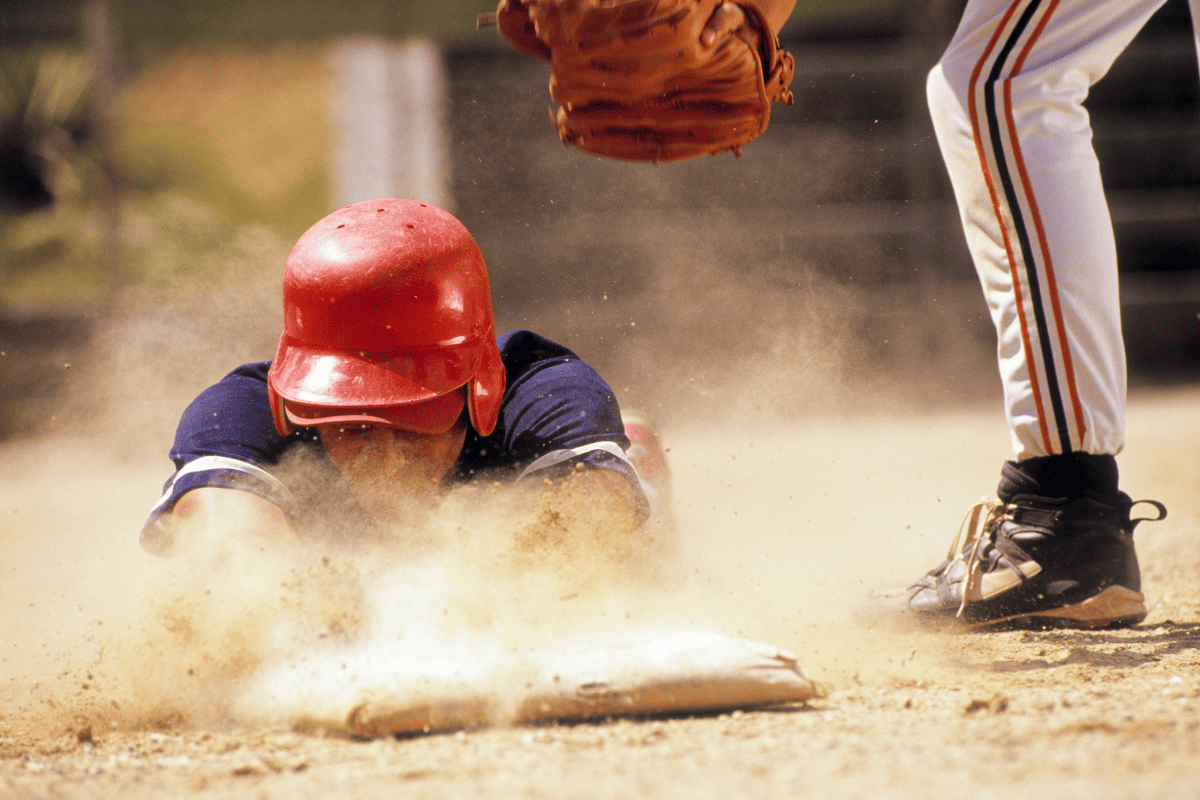Sliding into First Base: Rules, Techniques, and Scenarios
Sliding into first base is a move that’s somewhat rare but can be thrilling to witness in a baseball game. In a slide, a player dives to the ground, aiming to touch the base with their body before being tagged out by an opponent.
It’s a way of attempting to reach first base more quickly or avoid a tag, especially in a tight play. However, it’s not as common as sliding into other bases due to certain rules and practical considerations.
Relevance in Baseball
The act of sliding has been a part of baseball for over a century. It’s believed that the first player to slide was Fred “Slide” Kelly, who made this technique famous in the late 1800s.
The slide into first base often comes up in discussions among baseball enthusiasts and professionals alike. Sometimes it’s seen as a bold move, other times as unnecessary.
It can change the momentum of the game, either in favor of the running team or the fielding team, depending on the outcome. It’s one of those plays that highlights the blend of strategy and physical skill that baseball embodies.
Rules and Regulations
Major League Baseball (MLB) Rules
In Major League Baseball, there are clear rules about sliding into bases. However, the rules are more straightforward for second and third base than for first base.
The MLB doesn’t have a specific rule prohibiting sliding into first base, but it’s a move often seen as risky. Players usually run through first base because it’s faster, and they can avoid potential collisions or injuries.
Other Baseball Organizations’ Rules
Different leagues and organizations have their own sets of rules regarding sliding.
For instance, some amateur or youth leagues might have more restrictive rules to prioritize the safety of the players. In these leagues, sliding into first base could be prohibited or discouraged.
Comparing the rules across different leagues highlights the varying levels of safety and competitive considerations embedded in baseball regulations. Some leagues prioritize player safety over aggressive competition, and others encourage a more traditional approach to the game.
Read More:
Techniques and Training
When it comes to sliding, players have a couple of options: going head-first or feet-first. The head-first slide is often seen as more aggressive and can sometimes help a player touch the base a split-second faster.
However, it comes with a higher risk of injury. On the other hand, a feet-first slide is generally safer, but can be slightly slower.
Training and Conditioning for Safe Sliding
Sliding isn’t just about hurling oneself toward a base; it’s an art that requires practice and technique. Players undergo training to learn the correct way to slide to minimize injury risks.
This training includes learning how to position their bodies, when to begin the slide, and how to maintain speed while sliding. Conditioning exercises also play a crucial role in preparing players’ bodies for the impact and sudden movements involved in sliding.
Scenarios and Strategies
Sliding into first base is often a split-second decision made by a player who’s trying to avoid being tagged out. It might be a strategic move in a close game, especially if the first baseman is pulled off the base and has to make a tag.
However, it’s not a common practice as running through the base is typically faster.
Advantages
The primary advantage of sliding into first base is the potential to avoid a tag, which could be crucial in tight situations.
Disadvantages
However, the disadvantages often outweigh the benefits. Sliding can slow a player down, pose a higher risk of injury, and in some cases, may even lead to an automatic out if not executed properly.
The folks at the Sports Science lab (video above) did a comparison of running through first base or sliding head first. Their results showed that running through (.260 seconds over the last ten feet) was faster than sliding (.270 seconds).
This is mainly due to the fact that once a player’s feet leave the ground the body starts to decelerate at a rate of about 50%!
Safety Concerns
Sliding into first base, particularly head-first, comes with its share of risks. Players could face injuries ranging from minor scrapes and bruises to more serious issues like sprained or broken fingers, wrist injuries, or even concussions if collisions occur.
The act of sliding itself, if done incorrectly, can lead to awkward falls and potential harm.
Conclusion
Sliding into first base encompasses a mixture of strategy, skill, and a dash of daring. While it’s not a common move due to the associated risks and rules, it remains a topic of discussion and analysis among baseball aficionados.
As baseball continues to evolve, so might the rules and training surrounding sliding into first base. The ongoing debates and discussions may lead to new training techniques or rule amendments aimed at preserving the excitement of the game while ensuring player safety.

